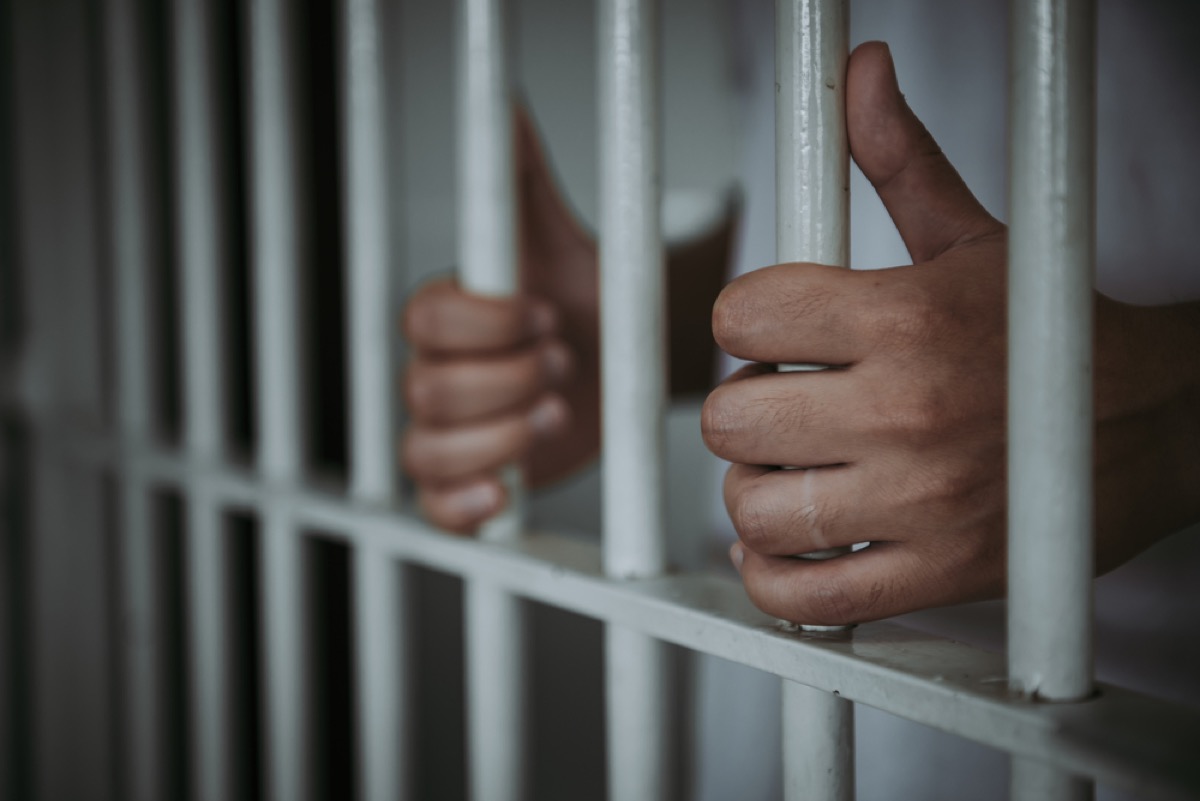Per an analysis by the Johns Hopkins Bloomberg School of Public Health, published in a July research letter in JAMA, prisoners are contracting coronavirus at a rate of 3,251 cases per 100,000 people, which means they are 5.5 times more likely to get COVID than those outside of prison. In the U.S. as a whole, the case rate is 587 cases per 100,000 people. RELATED: For more up-to-date information, sign up for our daily newsletter. The coronavirus death rate is also higher among people in prison. According to the research, there are 39 COVID deaths in prison per 100,000 prison residents, in contrast to 29 deaths per 100,000 members of the general population. That means that people in prison are 1.3 times more likely to die from coronavirus than those outside of prison. “While these numbers are striking, we actually think the disparities within prisons is much greater,” lead author Brendan Saloner, PhD, associate professor in the Department of Health Policy and Management at the Bloomberg School, said in a statement. “Some prisons are not reporting any cases, others are not even testing inmates, so the need for policies to protect incarcerated populations is more important than ever.” This analysis is not the first time the problem of coronavirus spread in prisons has been identified. In early June, multiple reports noted that a major aspect of the surge in coronavirus numbers was an increase in testing in correctional facilities. Widespread testing of prison inmates and employees did account for a significant uptick in reported cases.ae0fcc31ae342fd3a1346ebb1f342fcb And on June 16, The New York Times reported that coronavirus cases had doubled in U.S. prisons over the course of one month. “Congregate living facilities such as prisons are high-risk for COVID and other infectious disease because many people are in close quarters and the focus is usually not on sanitation and infection control,” Leann Poston, MD, a medical expert with Invigor Medical, told Best Life at the time. The problem of rapid coronavirus spread in prisons does not seem to be going away. As the study notes, some of the suggested remedies include an early release of prisoners, more widespread testing, and a stricter implementation of social distancing measures. Regardless of the tactics, Saloner reiterated that something must be done to quell these outbreaks. “Prisoners have a right to adequate protection of their health while incarcerated,” Saloner said. “The reality of these findings shows that we aren’t coming anywhere close to meeting their basic needs. Ultimately, it creates a dangerous situation for the inmates, prison staff, the communities that prisons are located in, and in our overall effort to contain the crisis.” And for more on where COVID is spreading, These Are the Places You’re Most Likely to Catch Coronavirus, Doctors Say.
